How are energy investors positioned?
Introduction & Market Context
Bruker Corporation (NASDAQ:BRKR) reported its Q1 2025 financial results on May 7, 2025, showing strong revenue growth but declining earnings per share as the company navigates significant policy and tariff headwinds. The scientific instruments maker saw its stock decline 3.14% to close at $39.45 following the release, with premarket trading indicating further pressure with shares down an additional 2.66% to $38.40.
The company’s mixed results come against a backdrop of challenging market conditions, with Bruker’s stock having fallen significantly from its 52-week high of $79.78 to near its 52-week low of $34.10, reflecting broader concerns about scientific instrument demand and policy impacts on the sector.
Quarterly Performance Highlights
Bruker reported Q1 2025 revenue of $801.4 million, representing an 11.0% increase from $721.7 million in Q1 2024. This growth was primarily driven by acquisitions, which contributed 9.6% to the overall increase, while organic growth was more modest at 2.9%. The company faced currency headwinds of 1.5% during the quarter.
As shown in the following performance summary chart:

The company’s Bruker Scientific Instruments (BSI) segment delivered organic growth of 5.1%, while the Bruker Energy & Supercon Technologies ( BEST (NYSE:BEST)) segment experienced a significant organic decline of 17.7%. Despite the strong top-line growth, Bruker’s non-GAAP EPS fell 11.3% to $0.47 from $0.53 in the prior year period, while GAAP EPS dropped more dramatically to $0.11 from $0.35 a year earlier.
Segment performance varied significantly across the company’s portfolio. The BIOSPIN Group, which specializes in nuclear magnetic resonance technology, reported mid-teens percentage CER revenue growth with strong contributions from preclinical imaging and lab automation. The CALID Group, focused on life science mass spectrometry and diagnostics, delivered even stronger results with mid-20s percentage CER revenue growth.
The following slide illustrates the performance of these two key segments:
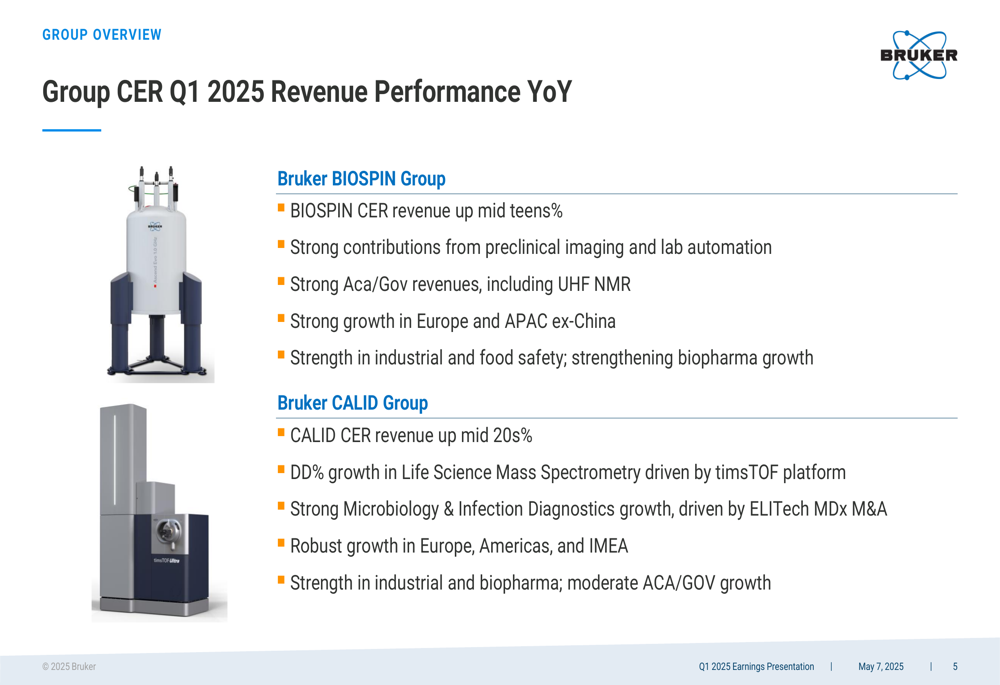
Meanwhile, the NANO Group reported high single-digit CER revenue growth, aided by the NanoString acquisition, though the company noted softness in X-Ray and NanoAnalysis tools. The BEST segment struggled with a high-teens percentage decline in CER revenue, reflecting weakness in superconductors for clinical MRI applications.
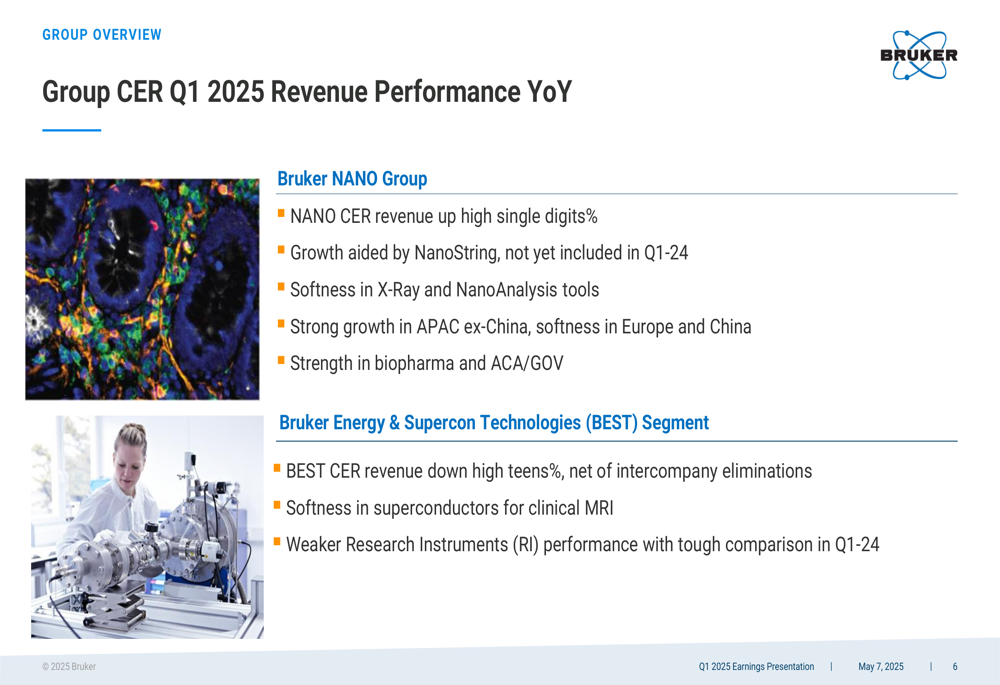
Strategic Initiatives
Bruker continues to advance its strategic initiatives through both innovation and acquisitions. In April 2025, the company announced the majority acquisition of RECIPE, a leading European provider of therapeutic drug monitoring (TDM) and other in vitro diagnostic kits. Based in Munich, Germany, RECIPE generated over $15 million in revenue in 2024 and is profitable.
The acquisition strengthens Bruker’s capabilities in small molecule clinical diagnostic assays and enables high-throughput workflows with RECIPE’s ClinMASS and novel ClinDART assays, as illustrated below:
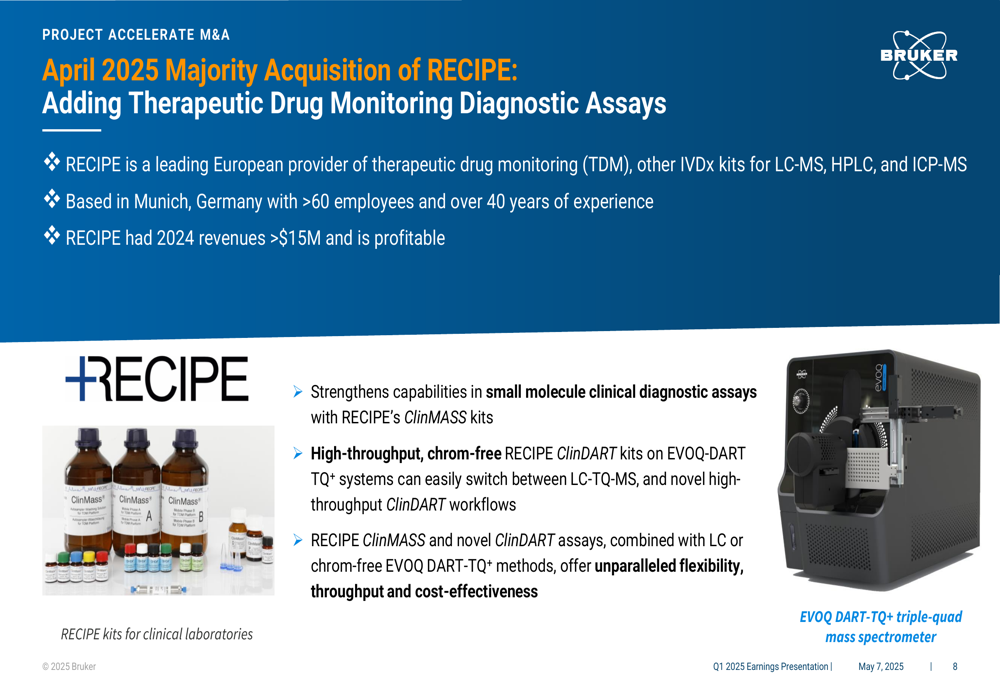
In addition to acquisitions, Bruker is advancing its position in the rapidly growing spatial biology market with several pioneering platforms. These include the COSMX Whole Transcriptome Panel with sub-cellular resolution, CellScape PowerOMX Software (ETR:SOWGn) and EpicIF for protein expression analysis, GeoMx Multiomics for high-plex tissue proteomics, and PaintScape for 3D spatial genomics.
The company’s comprehensive spatial biology portfolio is showcased in this slide:
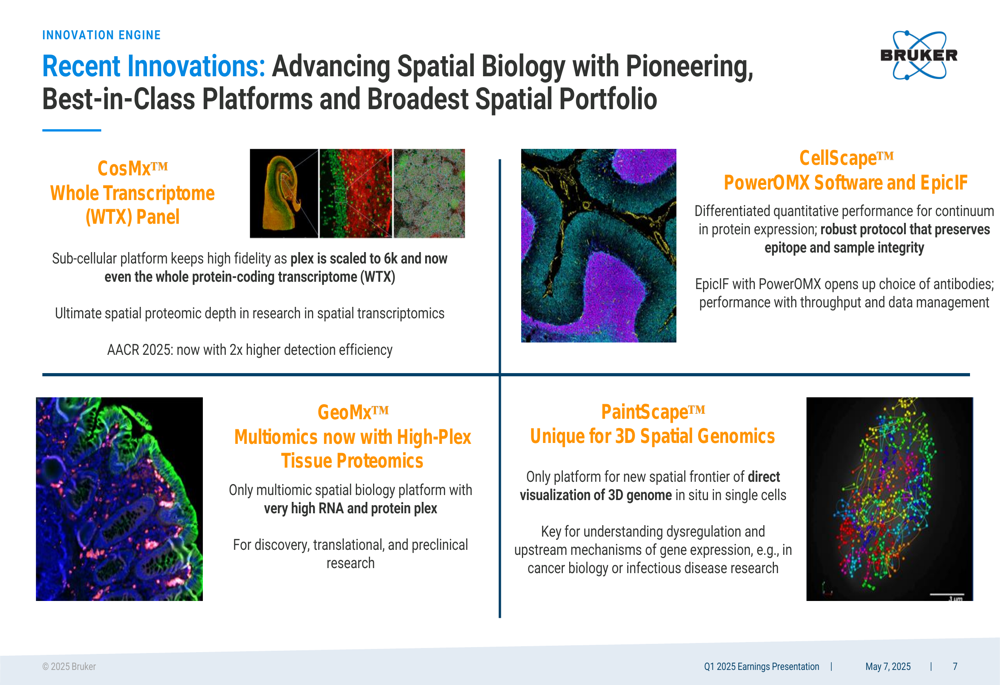
Financial Analysis
A closer examination of Bruker’s Q1 2025 financial performance reveals mixed results across key metrics. While the company achieved a slight improvement in non-GAAP gross margin, which rose 10 basis points to 51.3%, its non-GAAP operating margin declined 130 basis points to 12.7% compared to Q1 2024.
The detailed financial measures presented below show increases in both SG&A and R&D expenses as percentages of revenue, contributing to the margin pressure:

Despite the earnings pressure, Bruker’s cash flow performance improved significantly in Q1 2025. The company generated free cash flow of $39.0 million, compared to just $0.4 million in Q1 2024. This improvement was driven by better working capital management, particularly in inventory control and accounts receivable collections.
The following slide details the cash flow and balance sheet measures:
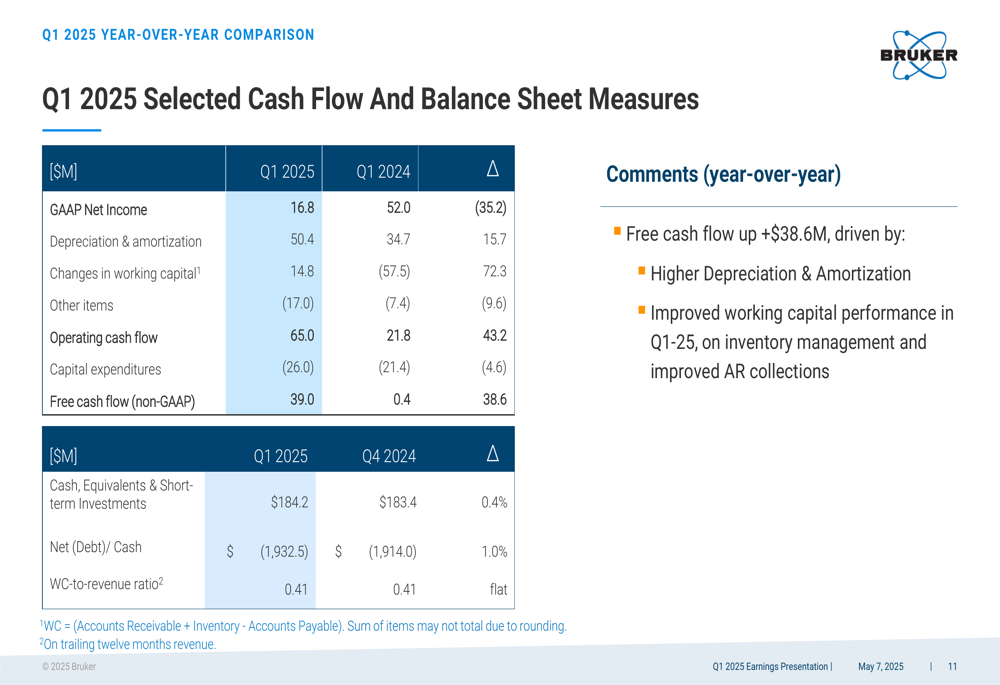
Forward-Looking Statements
Bruker updated its financial outlook for fiscal year 2025, reflecting both organic growth expectations and significant headwinds from policy changes and tariffs. The company now projects full-year revenue between $3.48 billion and $3.55 billion, representing reported growth of 3.5% to 5.5%.
The updated guidance includes a substantial impact from policy changes and tariffs, which are expected to create a gross headwind of approximately $100 million to revenue and $90 million to operating profit before mitigation efforts. Bruker expects to mitigate more than half of these impacts in FY 2025, with the remainder addressed in FY 2026.
The comprehensive FY 2025 outlook is presented in the following slide:
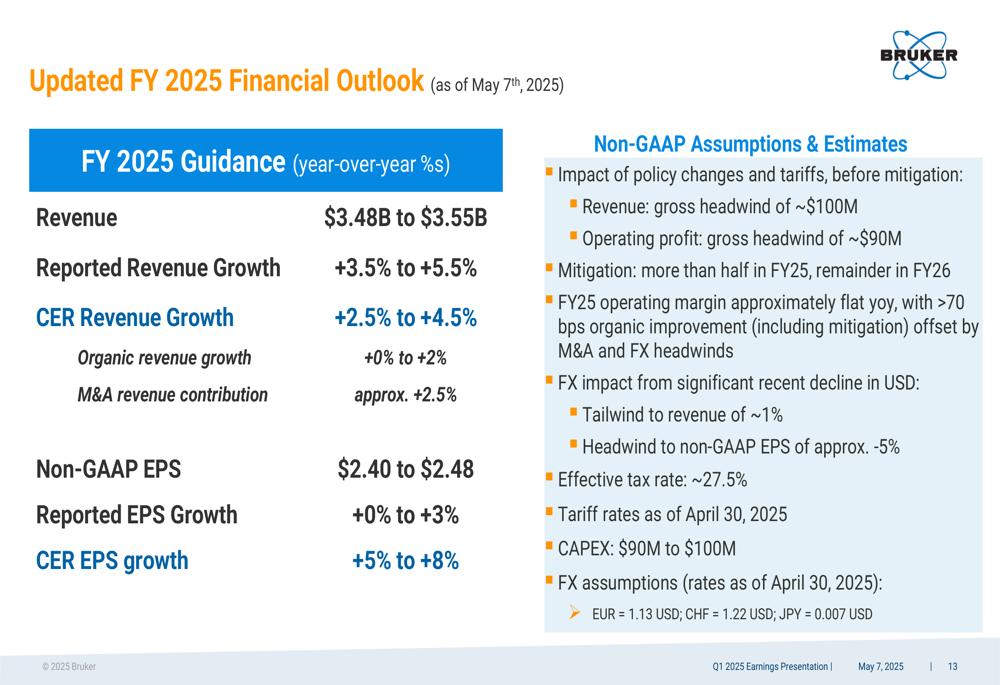
Non-GAAP EPS is projected to be between $2.40 and $2.48, representing reported growth of 0% to 3% and constant exchange rate growth of 5% to 8%. This guidance represents a significant reduction from the $2.67 to $2.72 range projected in the company’s Q4 2024 earnings call, reflecting the increased headwinds the company now faces.
Bruker expects its operating margin to remain approximately flat year-over-year, with organic improvement of more than 70 basis points (including mitigation efforts) offset by M&A and FX headwinds. The company also anticipates an effective tax rate of approximately 27.5% for the full year.
As Bruker navigates these challenges, investors will be closely watching the company’s ability to execute on its mitigation strategies while continuing to advance its strategic initiatives in high-growth areas like spatial biology and clinical diagnostics.
Full presentation:
This article was generated with the support of AI and reviewed by an editor. For more information see our T&C.
